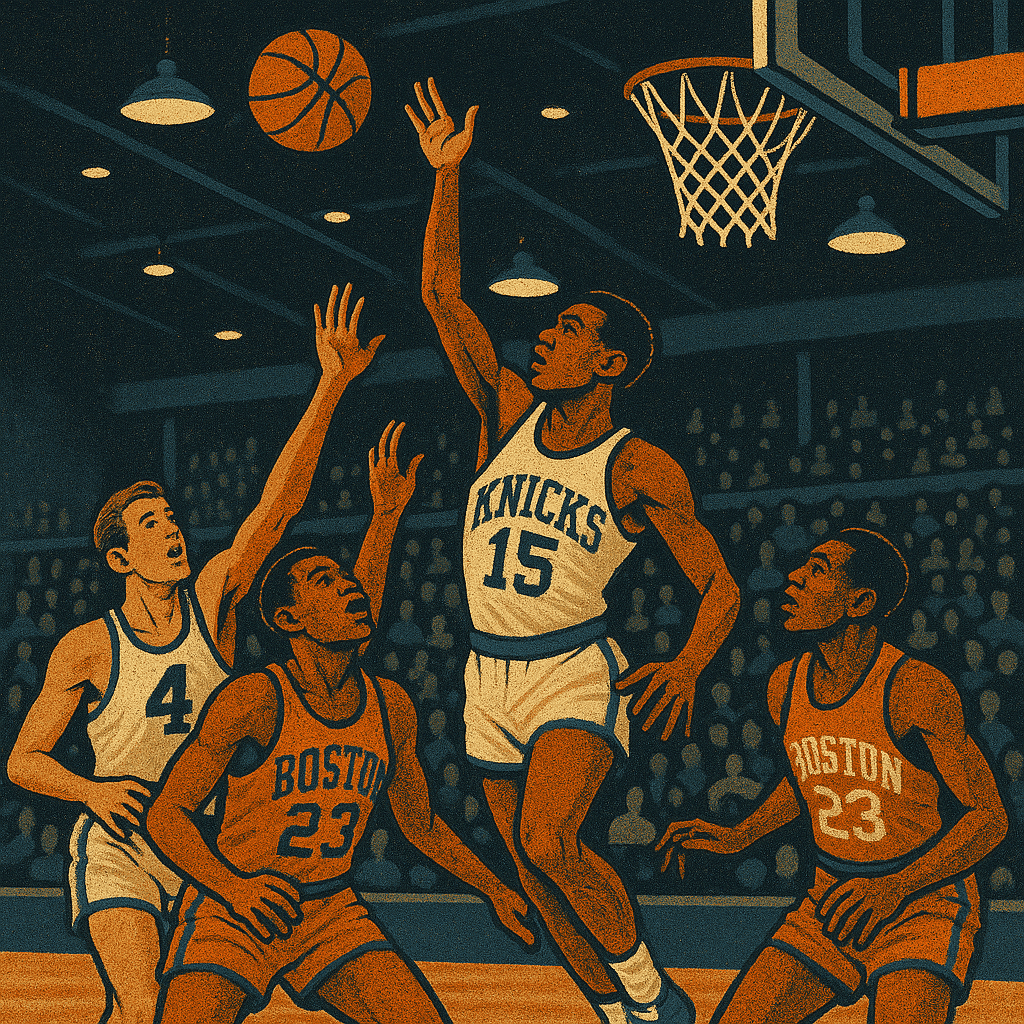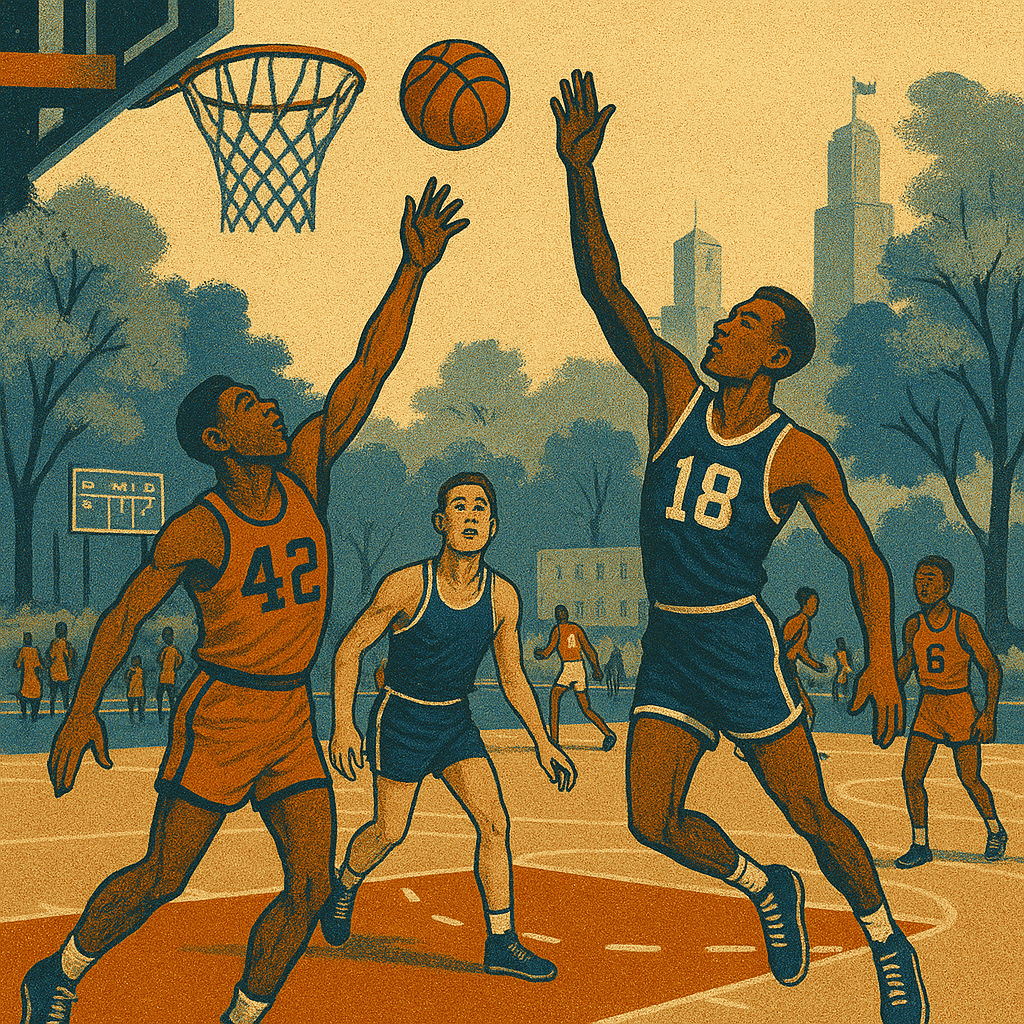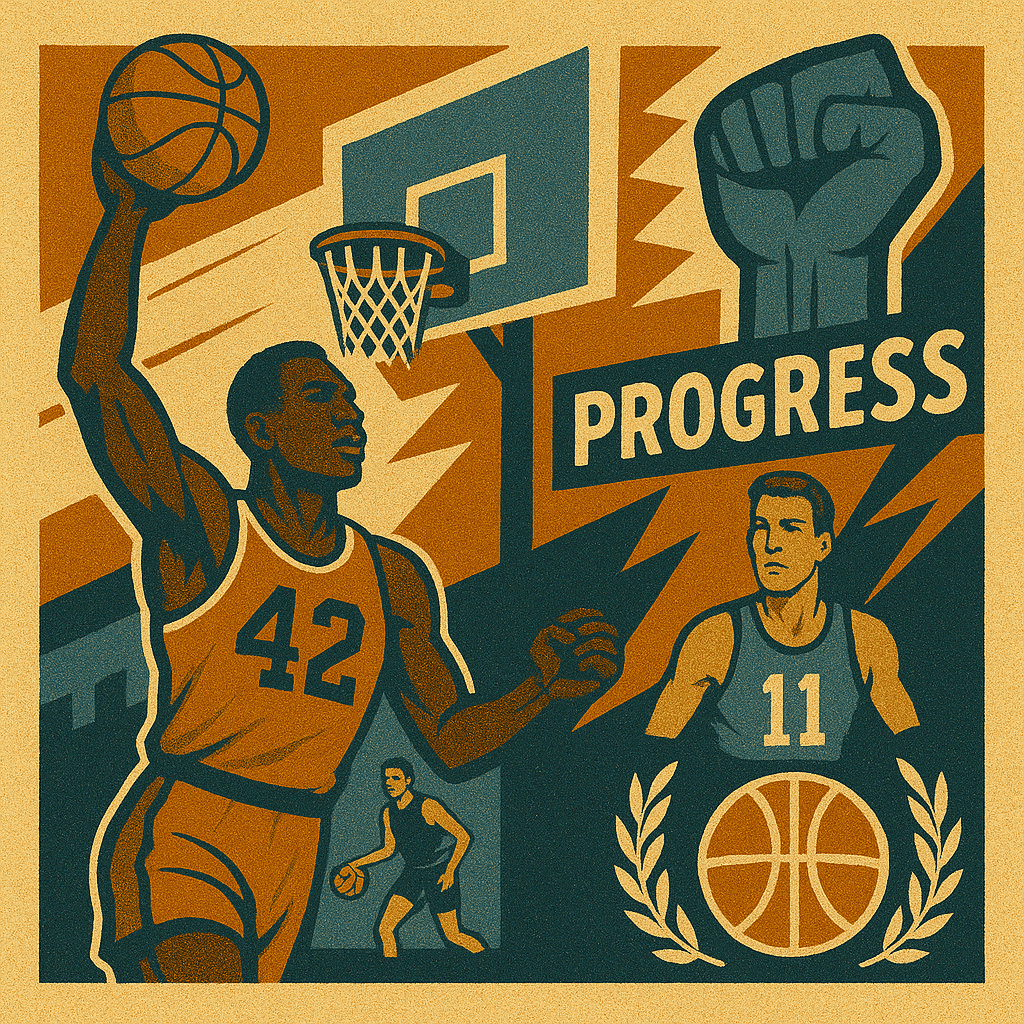On October 31, 1950, Earl Lloyd stepped onto the court for the Washington Capitols in a game against the Rochester Royals, becoming the first African American player to appear in an NBA game. Lloyd's seven-minute appearance, in which he scored six points, represented a watershed moment in professional basketball and American sports history, occurring just three years after Jackie Robinson had broken baseball's color barrier. While two other Black players—Chuck Cooper and Nat "Sweetwater" Clifton—were also drafted by NBA teams in 1950, Lloyd's game was scheduled one day earlier than theirs, securing his place in history as the first to actually play.
This quiet integration of professional basketball contrasted sharply with the intense scrutiny Jackie Robinson had faced, yet it held equally profound significance for the future of the sport and racial equality in America.

Path to Professional Basketball
Earl Lloyd had established himself as an exceptional player at West Virginia State College, leading his team to conference championships and earning All-American honors. Despite his collegiate success, Lloyd faced uncertainty about professional opportunities in an era when few Black athletes could play professional sports and most NBA teams refused to consider African American players regardless of talent. The 1950 NBA draft marked a turning point when three teams—the Boston Celtics, New York Knicks, and Washington Capitols—each selected a Black player, signaling the league's tentative steps toward integration.
Lloyd was drafted in the ninth round by the Washington Capitols, a selection that reflected both his abilities and the NBA's caution about integration. Unlike Robinson, who was carefully selected and prepared for the hostility he would face, Lloyd received no special orientation or protection. He simply showed up to training camp, made the team based on his basketball skills, and prepared to play professional basketball. This relatively understated approach to integration reflected both the NBA's lower profile compared to baseball and a pragmatic recognition that talented Black players could help teams win games.

Breaking Barriers Without Fanfare
Lloyd's NBA debut occurred with remarkably little media attention or public drama, particularly compared to the intense spotlight that had followed Jackie Robinson three years earlier. Playing for the Washington Capitols against the Rochester Royals in Rochester, New York, Lloyd entered the game and competed alongside white teammates against white opponents in what was, by his own later accounts, simply another basketball game. The lack of significant incidents or protests during Lloyd's debut suggested that basketball, with its smaller venues and less established traditions than baseball, might integrate more smoothly than America's pastime had.
However, this relative lack of drama did not mean Lloyd faced no discrimination or challenges. He encountered racism in various forms throughout his career, including hotels that refused to accommodate him, restaurants that wouldn't serve him, and occasional verbal abuse from fans and even opposing players. Lloyd handled these indignities with dignity and professionalism, focusing on his play and letting his performance speak for itself. His approach helped normalize Black players' presence in the NBA while demonstrating that integration could succeed when talented athletes were judged on their abilities rather than their race.
Opening Doors for Future Generations

Earl Lloyd's pioneering achievement paved the way for the NBA's transformation into a league where African American players would not only participate but eventually dominate. His career, which included stints with several teams and an NBA championship with the Syracuse Nationals in 1955, demonstrated that Black players could compete at the highest level and contribute to team success. While Lloyd never achieved the individual fame of later Black stars like Bill Russell, Wilt Chamberlain, or Oscar Robertson, his role as the first to break the color barrier established the foundation for their opportunities.
Lloyd's legacy extends beyond his playing career to his later work as a scout and the NBA's first African American assistant coach, continuing to break barriers and mentor younger Black players entering the league. His integration of the NBA represented one piece of the broader civil rights struggle that challenged racial segregation in American institutions during the 1950s and 1960s. Today, with African American players comprising the majority of NBA rosters and dominating the sport's highest levels, Lloyd's October 31, 1950 debut stands as the crucial first step in a transformation that made professional basketball one of America's most racially diverse and integrated major sports leagues.